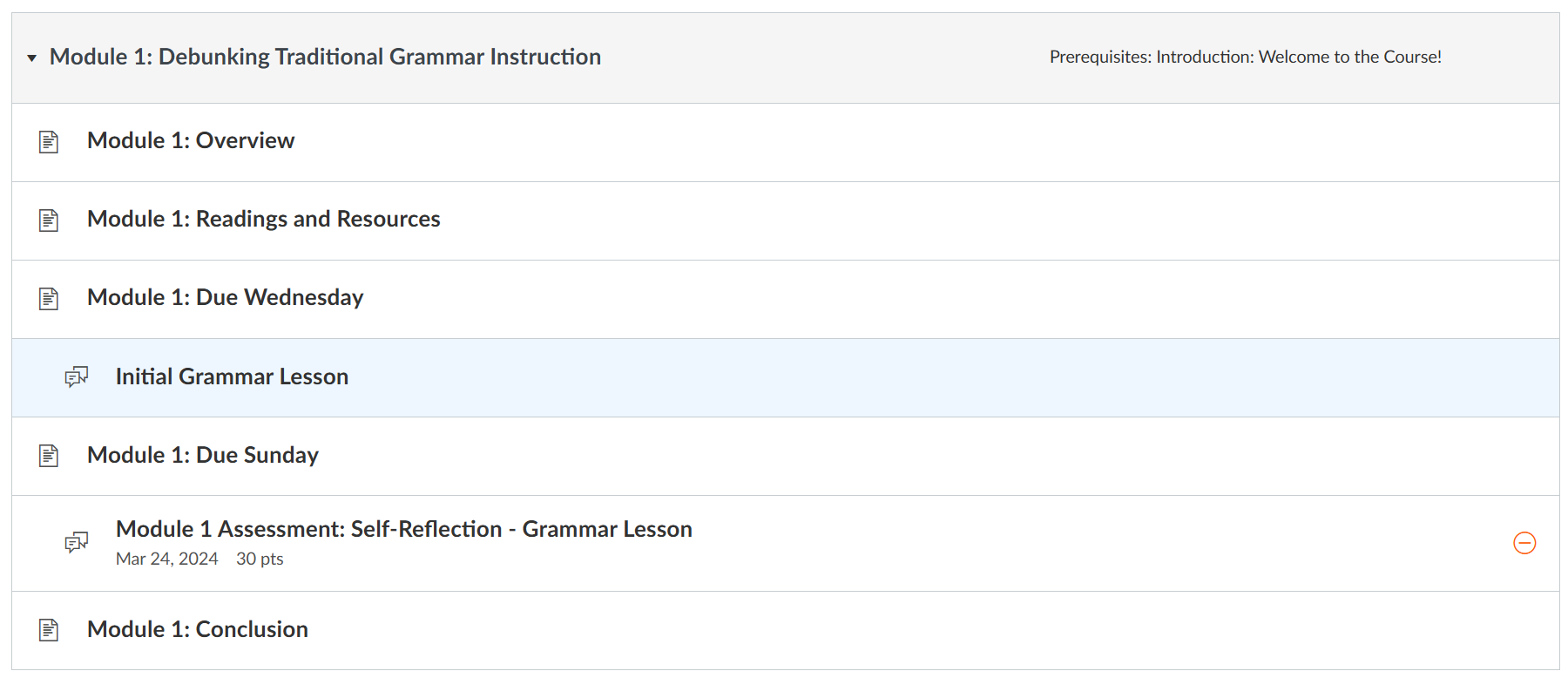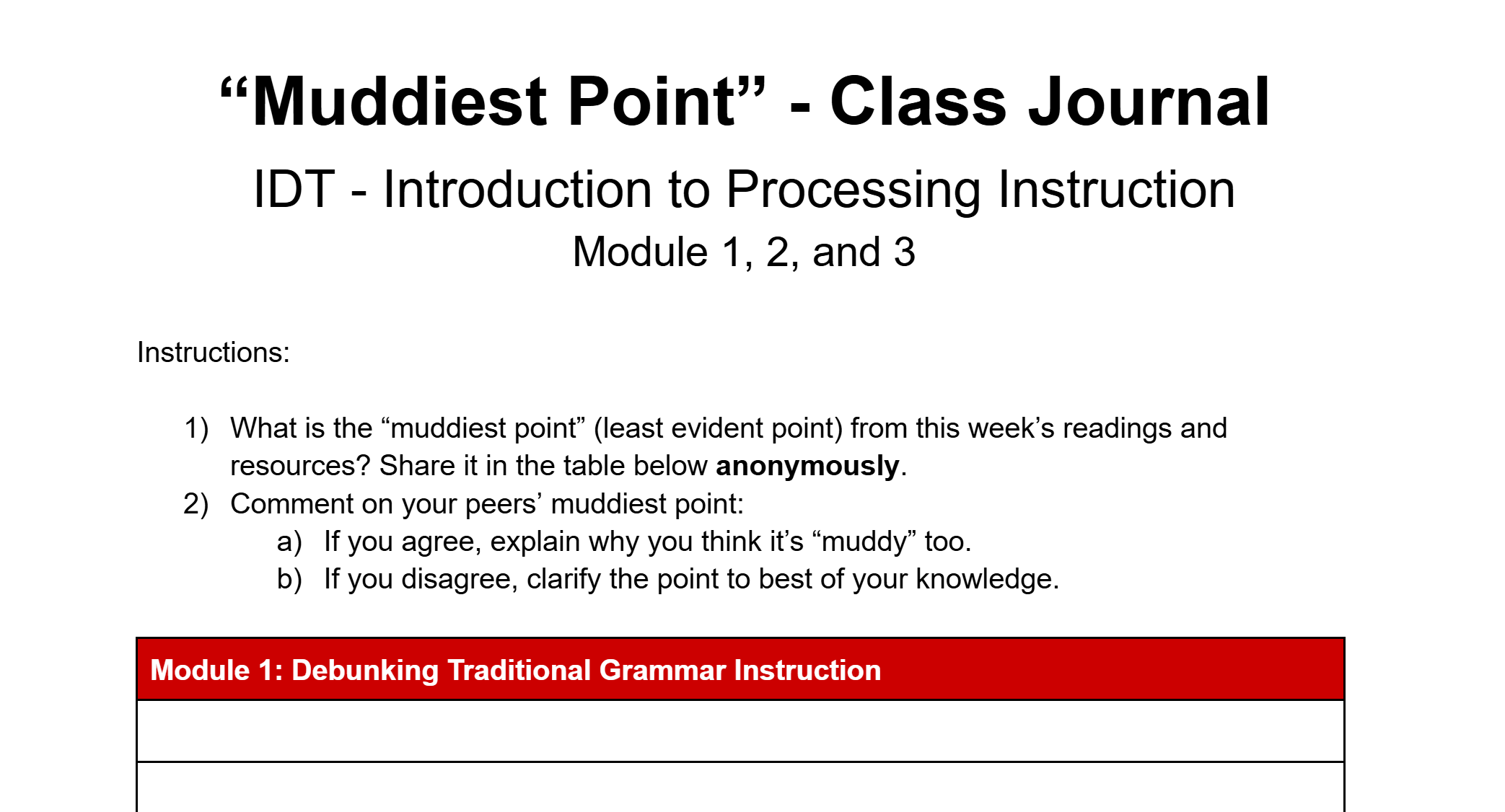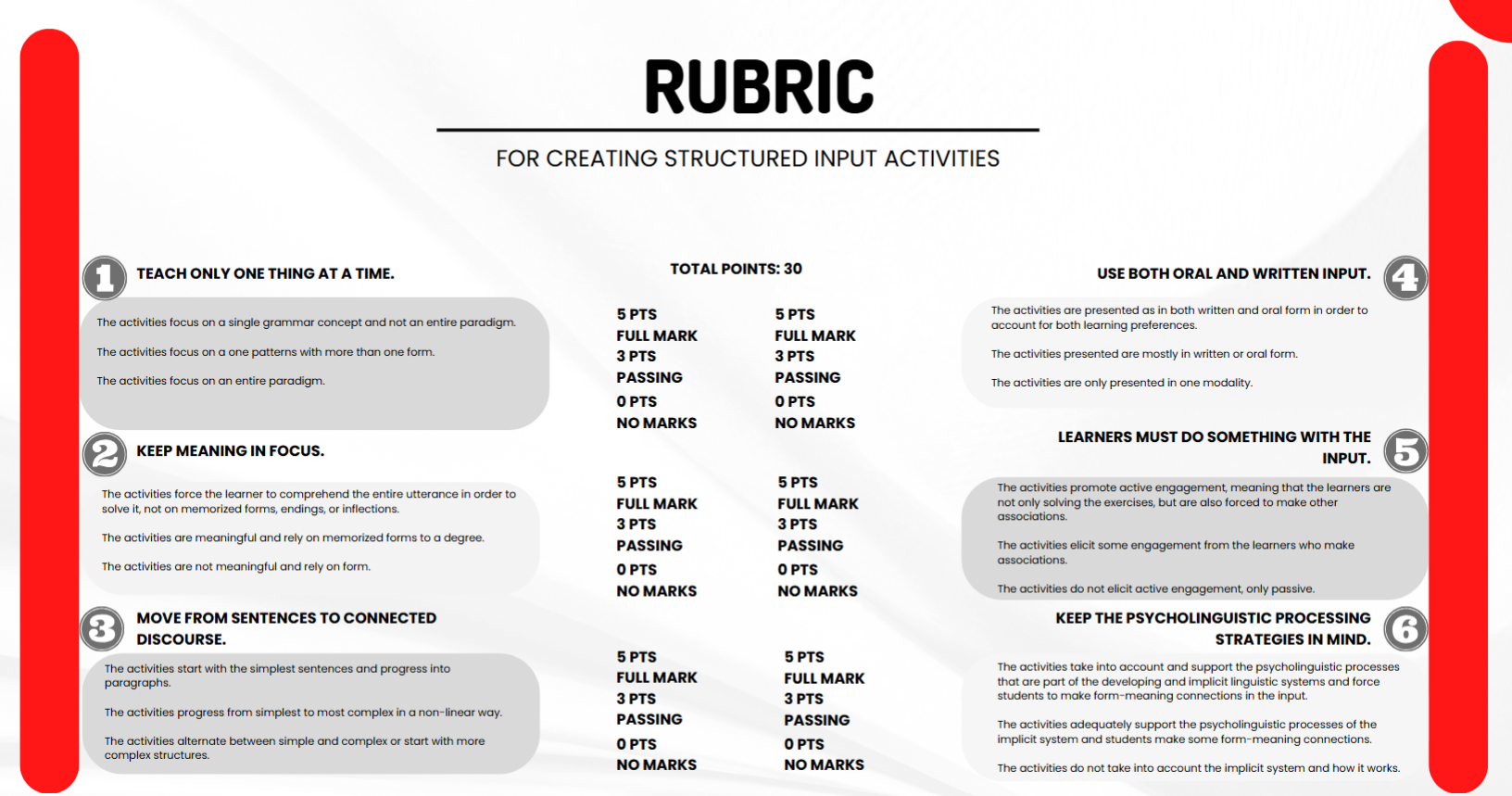
Intro to Processing Instruction
Objective
In this course, aspiring world language teachers will study Processing Instruction - an alternative to traditional grammar instruction by evaluating grammar teaching methods, reflecting on their linguistic experiences, and designing effective activities.
🛠️Tools: Canvas, Adobe CC
🎓Class: IDT 8030 - Design Blended Online Learning / Technology Artifact
⚛️ Learning Theory and ID Model: Keller’s ARCS and ADDIE
Problem
World language teachers often lack the knowledge and skills to teach grammar effectively. Traditional grammar instruction often focuses on rote memorization and mechanical drills, which do not align with how learners naturally process language. Additionally, traditional methods assume that explicit knowledge leads to implicit acquisition, but research shows that learners struggle to convert rules into real-time communication. Processing Instruction, on the other hand, prioritizes structured input that helps learners interpret meaning before producing language, leading to more effective and lasting acquisition.
Solution
In this Canvas course, world language teachers gain the skills to teach grammar through Processing Instruction (PI), based on second language acquisition research and pedagogy. PI the problem of ineffective traditional grammar instruction by directly addressing how learners process input. Instead of asking students to memorize rules and produce language mechanically, PI restructures input so learners must focus on meaning while unconsciously internalizing grammatical structures. By guiding learners to notice and interpret key grammatical cues in context, PI helps bridge the gap between explicit knowledge and real-time language use, leading to deeper acquisition and more communicative proficiency.







